What’s The Difference Between Heat Transfer Vinyl & Adhesive Vinyl?
Should you use heat transfer vinyl or adhesive vinyl on your next project?
While it is pretty clear cut what should be used when, the answer will sometimes depend on what you want to use it for.
For most projects you can use only one or the other, but for a few projects, you have the option to choose between the two.
In this post I’m going to compare adhesive vinyl and heat transfer vinyl and share with you which is used for what!
Comparing Adhesive Vinyl & Heat Transfer Vinyl
I need to mention that Cricut use their own lingo for these materials:
- Cricut heat transfer vinyl is called Cricut Iron-On
- Cricut adhesive vinyl is called Cricut Vinyl
I have made the mistake (a few times unfortunately) of buying Cricut Vinyl when I really wanted Cricut Iron On.
I am used to calling them adhesive vinyl and heat transfer vinyl! Despite the different names, Cricut’s products work just the same, and are a premium vinyl.
Best Place To Buy HTV & Adhesive Vinyl
For those of you who already know the difference between HTV & adhesive vinyl, and just want to know where to get it, check out this table. Here are the best places to buy iron on and adhesive vinyl.

| Amazon |
| HTV on AmazonAdhesive on Amazon |

| Michaels |
| HTV on MichaelsAdhesive on Michaels |

| Cricut |
| HTV on CricutAdhesive on Cricut |

| Expressions Vinyl |
| HTV on Expressions VinylAdhesive on Expressions Vinyl |

| Heat Press Nation |
| HTV on Heat Press NationAdhesive on Heat Press Nation |

| Swing Design |
| HTV on Swing DesignAdhesive on Swing Design |
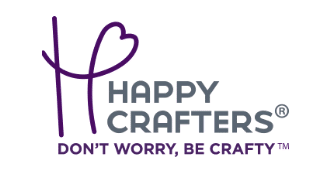
| Happy Crafters |
| HTV on Happy CraftersAdhesive on Happy Crafters |
You have the option to buy heat transfer sheets or rolls in different widths and lengths.
Because I use the Cricut Maker, I can’t use vinyl wider than 12 inches (unless I want to trim it to size myself, which I don’t). Many HTV sheets are sold in 12 x 12 inch sheets, which is what I prefer. However, for vinyl colors that I use a lot of (black & white heat transfer vinyl, for example), I will buy a 5 foot rolls or larger.
It is best to go with a known brand of premium heat transfer vinyl. The quality of the vinyl will determine how easy it is for you to do your project, and the quality of your finished custom t shirt.
What Is Heat Transfer Vinyl?
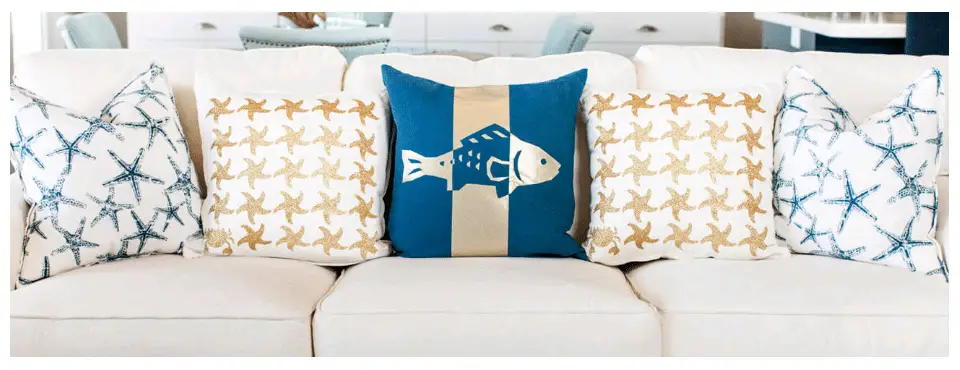
Cricut sell a huge range of quality heat transfer vinyl
Heat transfer vinyl, or HTV, is a product that is applied to t-shirts and other substrates by heat. You will have had many t-shirts and other garments with HTV on it! The heat transfer can be done using a heat press machine, a home iron, or the recently released Cricut EasyPress.
HTV vinyl comes in sheets or rolls, and has two parts to it. There is the vinyl and the carrier sheet. They are both joined together and come apart during the heat transfer.
There are different types of heat transfer vinyl, including:
- flocked HTV
- foil HTV
- patterned heat transfer vinyl (my favorite!)
Perhaps the most well known brand of heat transfer vinyl is Siser EasyWeed HTV. I have to confess that this is my favorite brand, just because it is so easy to use, and it looks and feels great.
What Can You Press Heat Transfer Vinyl Onto?
Heat transfer vinyl is most commonly used for t shirts and other clothing. I use it all the time on baby onesies. However, you can press it onto a ton of other surfaces – some of the following I haven’t even tried myself yet!
You can press HTV onto:
- T shirts
- Sweatpants
- Baby onesies
- Sweatshirts
- Hats and caps
- Shoes
- Wooden farmhouse signs
- Swimsuits
- Placemats
- Teatowels
- Baby and children’s clothes
- Canvas tote bags
- Stretched canvas (a reverse canvas project, for example)
- Drink coolies
- And much more!
Heat Transfer Vinyl For T Shirts
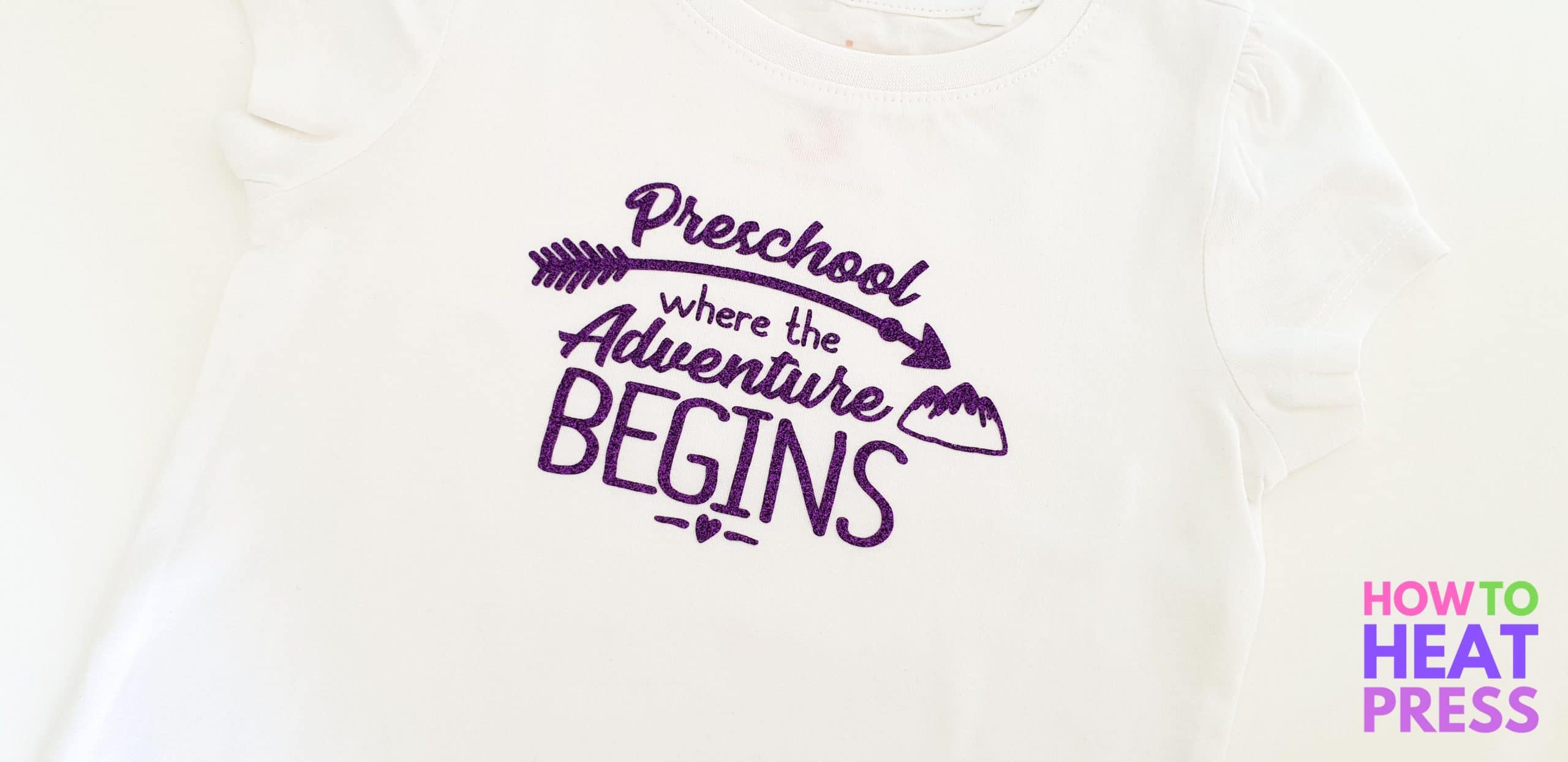
A t-shirt made with Siser Glitter HTV
If you press HTV onto your clothing correctly (as per the manufacturers instructions), it will adhere well and last many washes.
Adhesive vinyl cannot be used on clothing. This would be like putting a sticker onto your t-shirt and then expecting it to last. Therefore, it’s always best to use HTV for clothing and fabric.
How To Use Heat Transfer Vinyl
Here’s what you need in order to use heat transfer vinyl and make your own t shirts:
- a cutting machine
- weeding tool kit
- an iron, a Cricut Easy Press, or a heat press
- Teflon sheets or parchment paper to protect your heat platen or iron
HTV Design Example
Here’s a quick example of how to make an HTV design in Cricut Design Space and to press it onto a baby onesie.
1. I chose a free font and arranged the text as you see below.

2. Mirror your image because HTV is applied in reverse.

3. Place the HTV onto the cutting mat and then weed the design (pull away excess vinyl) to be pressed.
4. Pre-press any fabrics to remove moisture and wrinkles before you press your design. Place the heat transfer onto the onesie and press with your iron, EasyPress, or heat press.

I used the Cricut EasyPress for this project
Once the design has been pressed onto the garment, the vinyl carrier sheet is removed. For most HTVs (including Siser & Cricut) the carrier sheet can be peeled off while warm.

The final result – see the full Stretch Vinyl Project here
What Is Adhesive Vinyl?
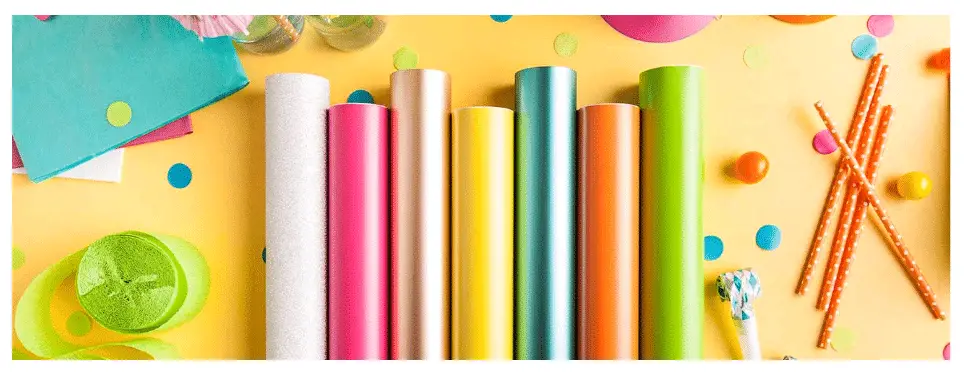
Cricut sell a large range of quality adhesive vinyl
Adhesive vinyl is just like HTV, except it’s not applied with heat, it’s just a great big sticker!
As with HTV, there are different types of adhesive vinyl you can choose from. You can choose one with a temporary or removable adhesive, such as Oracal 631, which is great for things such as wall decals.
Or, you can get vinyl as a permanent adhesive, such as Oracal 651, which is ideal for everything, especially outdoor use on things such as signs and cars. Oracal 651 is also suitable for mugs which will be washed many times. There are also other types of specialty adhesive vinyl available for specific situations. Or, for more info, see ‘what is Oracal 651 used for?‘
What Can You Put Adhesive Vinyl Onto?
You can apply adhesive vinyl onto:
- Walls
- Fridges
- Signs
- Cars
- Cups and mugs
- Pots and vases
- Stretched canvas and canvas tote bags
- Glass (e.g. on photo frames or glass chopping boards)
- Wooden plaques
- Ceramic tiles
- See this list of adhesive vinyl projects for more inspiration!
Adhesive vinyl is best for things that are not going to be washed or even handled a whole lot (so definitely not clothing!).
It’s fine for cups and mugs – though they say not to use in a dishwasher. However, I do put my mugs with adhesive vinyl through the dishwasher, and they’re totally fine. They’ve been through dozens, if not hundreds, of times and haven’t begun to peel.
It’s not best to apply adhesive vinyl to anything that is rough or porous as it won’t stick well. When applying adhesive vinyl to stretched canvas for example, it’s best to coat the canvas in a layer of acrylic paint or to spray it with clear coat before you apply your vinyl (make sure the paint is completely dry first). This will help the vinyl to stick better.
The same goes for wood, which you can also sand down and stain before applying vinyl.
How To Use Adhesive Vinyl
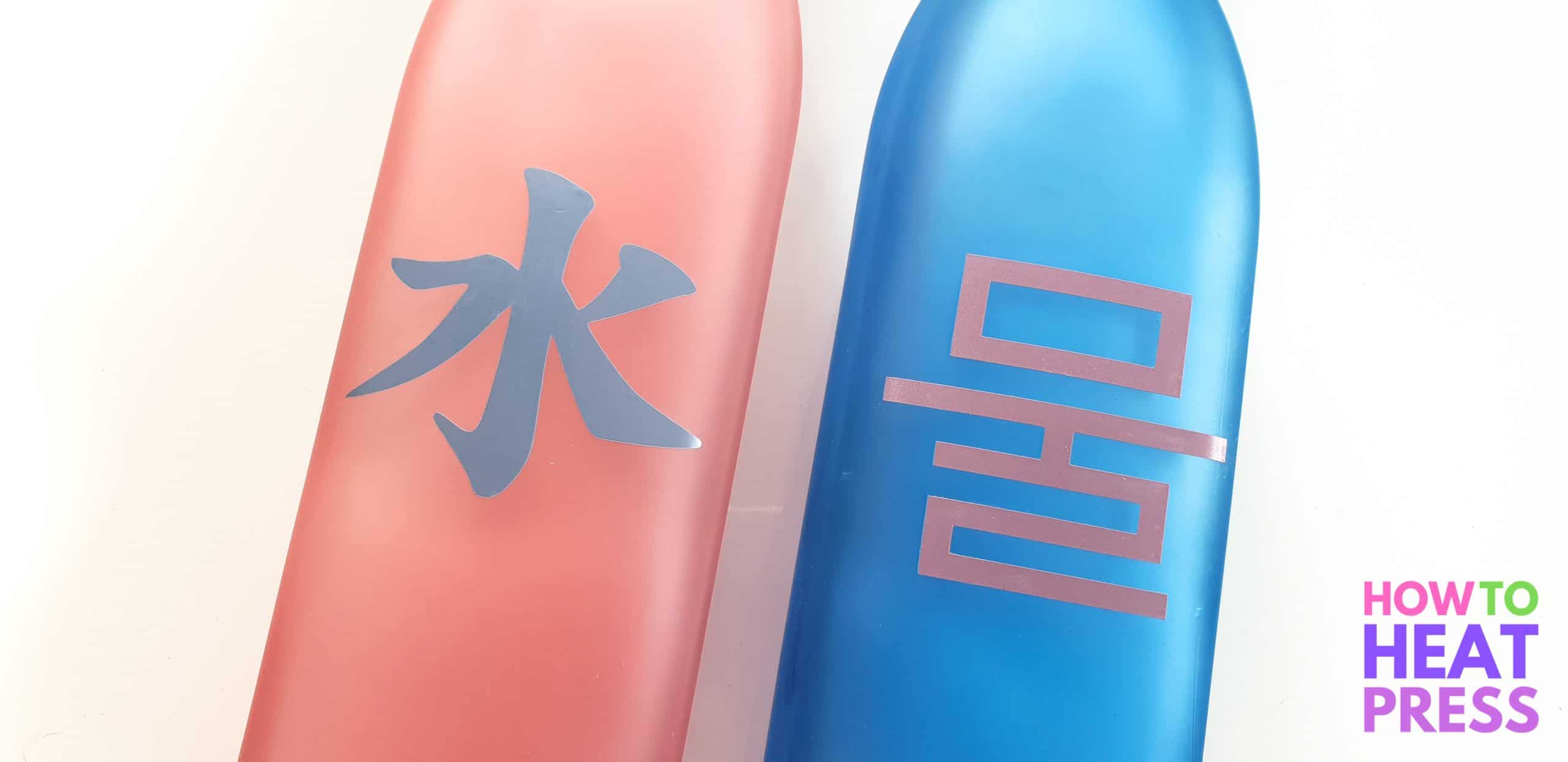
Or learn how to apply vinyl on glass
Here’s what you need to make your own adhesive vinyl decals:
You will need to cut your design with the backing paper side down and the vinyl facing up, in your cutting machine. Unlike with HTV, you do not need to mirror your design before you send it to be cut.
Here’s how the process goes (also see video on how to use adhesive vinyl below):
- cut your design into the vinyl
- remove the excess vinyl
- apply transfer tape over the top of the adhesive vinyl and burnish
- pull away the sticker paper
- apply transfer to the surface and burnish
- remove transfer paper leaving only the adhesive vinyl on your project
HTV Vs Adhesive Vinyl
Should you use heat transfer vinyl or adhesive vinyl?
Heat transfer vinyl is always best for clothing and for fabric items such as tote bags, cosmetic pouches, drink coolies, mousepads and so on. The use of heat allows the design to firmly adhere to the substrate, making it more durable.
Adhesive vinyl is great for awkwardly shaped objects that aren’t able to be heat transferred. Overall, adhesive vinyl can be a lot more versatile with the things you are able to create with it. It’s great for making wall art, or for decorating things such as glass chopping boards!
This video from Expressions Vinyl shows some interesting and unconventional ways of using HTV (you might get a few new ideas!):
Pros of Using Heat Transfer Vinyl
- It is more durable and lasts a lot longer when used on canvas, wood, ceramic etc.
- HTV is better for business – if you want to sell great, high quality products, then HTV will give a better result (as long as it’s appropriate to be used on the substrate)
- It is more fun doing heat transfers, especially with a heat press!
Pros of Using Adhesive Vinyl
- Likely to be cheaper than using HTV as you need less equipments
- Apply adhesive vinyl to awkwardly shaped surfaces, like wine glasses. You can’t do this with a heat press!
- Easily applied to outdoor surfaces, like vehicles
- It’s quicker to use and less complicated than HTV. You don’t need to buy a heat press, learn how to use it and learn how to use it. Once you have cut your design you can simply apply it with your hands.
HTV Vs Vinyl
I hope you now have a better idea of when to use HTV and when to use adhesive vinyl.
As you see, there are pros and cons to using each, depending on the project you have in mind. You can consider which is going to be more durable and which is going to be more convenient. You can choose which is going to be cheaper and which one is best for the surface.
Thanks for reading! Please leave us a comment down below and tell us about a project you have completed recently!
Pin this post for later! 🙂
(Please note: This post contains affiliate links. Read our full disclosure policy here.)

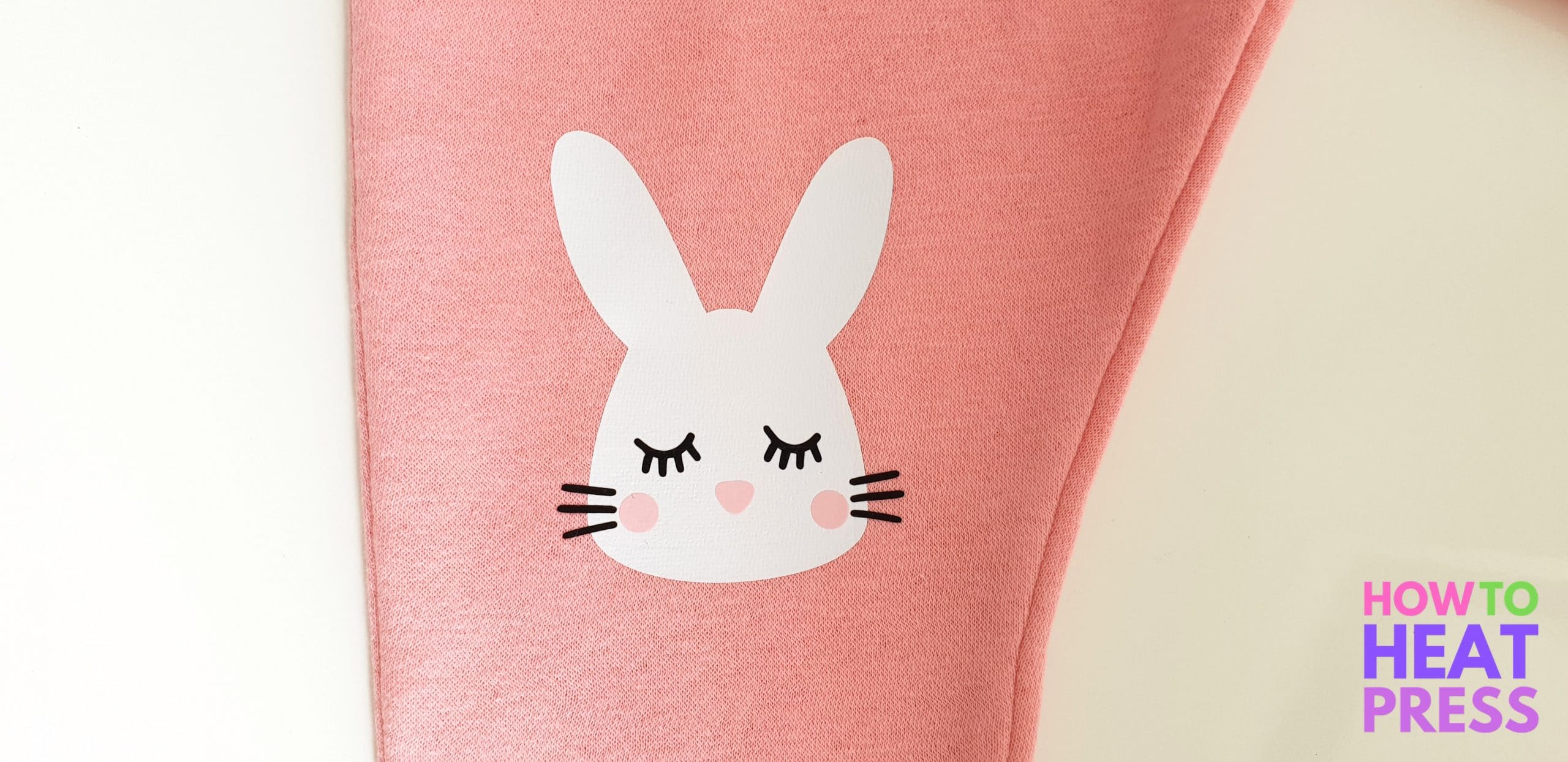

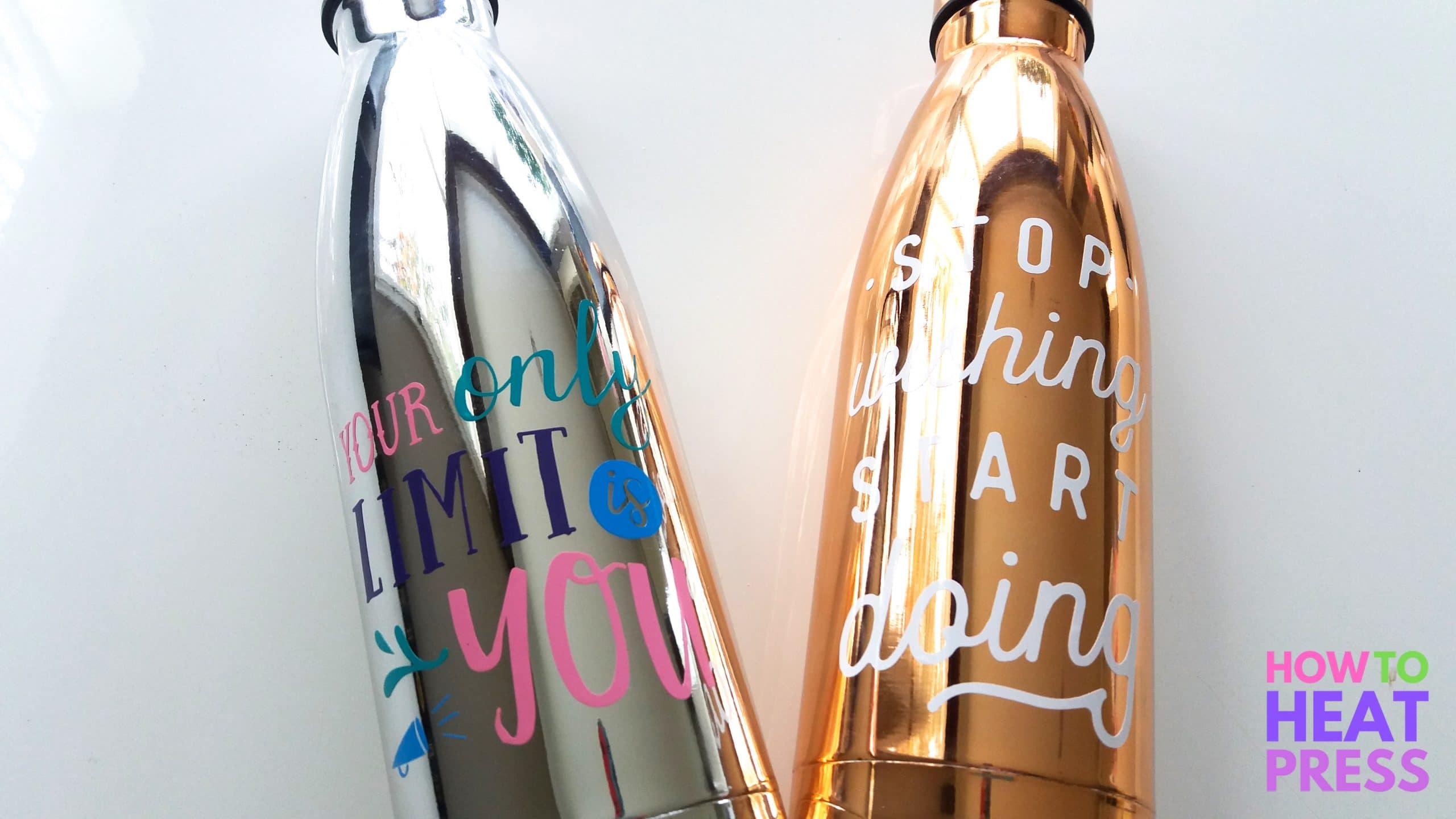

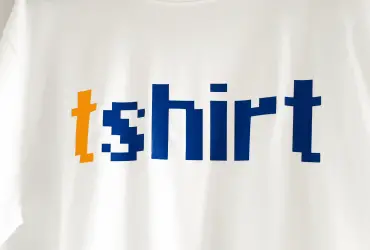
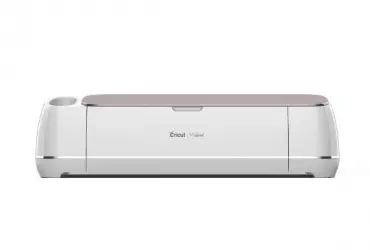
When using the Oracal 651 on a coffee mug, would you recommend a dishwasher safe modge podge to coat it? It was recommended to me, but do NOT like the visible brush strokes.
Hey Elaine – I’m with you on not loving the finish you get with modge podge. If you’re using permanent vinyl I would skip the finish and just hand wash the mug. It should last for many years that way!
Just stumbled across this GREAT article and as a newbie I needed to say ‘Thank you’.
That’s great to hear, Lenea! We’re so glad it was helpful.
Such a well written and completely understandable to the beginner such as myself to feel informed and be able to execute come day one, bravo! My question is, when using HTV, is their any difference in temperature, how long it last, or how easy to cut between the different types of HTV such as say metallic, it glitter, or glow in the dark, or regular HTV paper? Are they equally as easy to use ?
Hi Dustin, thanks for the comment.
1. Yes each HTV is applied at different temperatures – it even varies between brands
2. If applied correctly the heat transfer (whatever type) should outlast the t shirt
3. As long as you use the correct blade and cutting depth on your machine it should be equally easy to cut
4. Some HTV is more difficult to apply correctly – eg. foil HTV can take some practice
Great article! I was wondering…is it okay to apply HTV onto a preprinted shirt? For example, I have a shirt with a heart already on it and I want to add a name onto the heart. Can this be done without ruining the heart?
Hi Heather, it might be alright but it really depends on what type of transfer the original is.. is it HTV? Screen printed? Plastisol?
This is not what I was looking for BUT, it was so well put together that it made it quite interesting. Thank you for taking the time to present this with EXCELLENCE. Be Well…
Thanks Cheryl!
Can i used iron on transfer sheets with a heat press? I’m very new at this. Also thank you for this read.
Yes I tend to use these transfer sheets with my heat press – if anything, it’s better!
I would like to know if the oracal 651 would work as a stencil to airbrush on a t-shirt?
Hi Dorothy, I haven’ tried this myself, but I’m sure it will work well. I found this tutorial on ‘The Cloth Parcel’ which has some good tips…
Hi Dorothy, I haven’ tried this myself, but I’m sure it will work well. I found this tutorial on ‘The Cloth Parcel’ which has some good tips…
Thank you for a great article – exactly what I was searching for!
hi. geat read and very informative. I just wondered if you can stillheat press onto standard self adhesive vinyl. The reason I ask is there is a product that I have been testing and the self adhesive works better when applied than htv vinyl when heat pressed but wasn’t sure if standard adhesive was made of something else to that of htv and could be more dangerous if applied under heat of say 130 degrees.
Hi Dave, personally I wouldn’t heat apply adhesive vinyl. I imagine that attempting it would melt and/or warp the vinyl.
I have a mug press and would like to know if using the press and a HTV is better than using vinyl on mugs for longer lasting.. I
Hi Debbie, it’s about the same really. It’s recommended either way to hand wash mugs with HTV or adhesive. As long as you’re using a quality vinyl and looking after the mug afterwards, it should last a really long time.
That is awesome that heat transfer vinyl will last many washes and done correctly. I am looking to have some shirts made and I was not sure if I should use heat transfer vinyl. This is something that I think I want though. It would be awesome to have a metallic looking vinyl on a shirt.
Once I place adhesive vinyl on a cup, mug, yeti…..would it help to use a heat gun at all to adhere the vinyl even more? Or would the heat gun damage the adhesive vinyl?
Thank you.
No I wouldn’t use a heat gun – it won’t help. I was a sign writer for a while and we actually used heat guns to remove vinyl from thing like vehicles. The heat will warp and cause the adhesive to soften and come loose.
Thank you so much for your thorough explanation. I can’t wait to start playing around with designs 🙂 I do have a question about socks though!!! I am seeing all the cute quotes on the bottoms of socks and know my kids would love that. Is that HTV or something entirely different???
Hey Karen, yes most people are using HTV for sock quotes 🙂 The HTV will wear out a bit sooner than when it’s on a t-shirt, but it will be super cool for a while. Your question has encouraged me to do a few pairs and make a post on it – I’ll let you know when it’s up! Thanks 🙂
So you are saying that when you have a choice of either HTV or Oracle 651 on.. let’s say a coffee mug you want to potentially sell… you would use the HTV??? I just want to clarify because I have been confused about the difference for a while now. I currently have a press with a mug press attachment so that part isn’t an issue. I’m curious as to which is the best option and why. Thank you!!!
Hi Sarah – I would just use Oracle 651 or another good adhesive vinyl. Just hand wash the mugs and they will last for years 🙂 A mug press is best for pressing sublimation transfers.
What transfer tape did you use for this?
Hi Ashley, I tend to just use the standard Cricut transfer tape for day-to-day adhesive vinyl projects. Don’t go with the strong grip tape, it’s impossible to get the adhesive vinyl off!
This was a very informative article. Thank you. I am new to this and am making my own Save the Dates using real flip flops so this helped me decide what the best vinyl will be to use, adhesive vs HTV. I can’t wait to get them all made and out in the mail!!!
Sounds fun, thanks Amy 🙂
Hello. Can you iron on self adhesive vinyl onto fabric? Or put fabric through a laminator?
Hi Marci, no adhesive vinyl is not for clothing or fabric. I suppose you could place a thin layer of material between a laminated sheet and put it through, but I wouldn’t recommend trying it, and why would you want to? (I may have misunderstood your question…).
Hi
Could I use a heat gun to apply heat transfer vinyl onto a glass?
Hey Jennifer, no I’m sure that would not work. Htv needs pressure to transfer as well as heat, and using a heat gun directed at a glass will crack and break it. Use adhesive vinyl on glass.
Thank you for the opportunity to enter the contest. I have done 651 on cell phone case, water bottles, whatever I think of. I have used HTV glitter on cups. HTV on polyester shirt, HTV on tshirts, flags, towels. I love how fun it is.
I love working with adhesive vinyl and HTV. I always run out of ideas on what to use adhesive for though. One can only make so many mugs!
I know what you mean Gloria! We have a few posts with more ideas on what to make with adhesive vinyl. Here are Cricut project ideas and Silhouette project ideas. Though if I remember rightly you can basically make everything in the Silhouette article with a Cricut, and vice versa. We also just published a new post on custom stainless steel water bottles that you should definitely check out!
hi great article!
can you subliminal print onto HTV and then press it onto the item?
Hi Dave, there are products like Cricut Printable vinyl which you can print on and then cut out with your cutting machine. It is for use with inkjet printers. There is also a similar product by Silhouette. Neither of these are HTV though, they are just adhesives.
You can find printable HTV for sale on eBay. It is also for use with an inkjet printer and is pressed at 300-320℉ for 10-15 seconds.
Thank you! I finally have my question about Cricut Premium Vinyl explained. I had tried to use it on a T-Shirt, but when I washed it, all the letters fell off. I did not know that it couldn’t be used on T-Shirts. I would have tried it again and It wouldn’t have worked, so you saved me from the frustration of this happening. I do wish that I had known this before I had bought it. It said permanent, so I assumed that it would be.
From now on, I should make sure I buy HTV. And you do mention what I can use the adhesive vinyl for, so maybe I can repurpose it for something else.
So glad you got it all sorted out, Jay! There are tons of uses for adhesive vinyl – here are a few – so I’m sure you’ll find something. Good luck!
I was wondering which vinyl would be better for acrylic skinny tumblers? I don’t want to use epoxy either.
Hey Kristen, sorry for the delay in replying – you’ve probably found some vinyl by now! I would use Oracal 651 for tumblers. It’s best that they are hand washed though, the design probably won’t last as long in the dishwasher.
Hello, I want to start personalizing phone cases. The material of the cases is soft silicon but I don’t know if I can use vinyl? I don’t want to spend my money on something I’m not sure will work!
Hi Daniella, vinyl won’t adhere well to silicon, personalization of such cases usually happens during manufacturing. The mold will have a brand name or something like that which is raised or indented into the silicon. I have emailed you with some further thoughts.
Currently I have my vinyl designs manufactured in China and it came out horribly in the wash after following their instructions. I’m looking for a design manufacturer that uses durable, high quality vinyl that lasts especially through the wash.
Hi Kelly
The best place that I know to get custom made transfers is from Stahls’. Have a look at this page.
It will be more expensive than China, but far superior quality. You may just need to charge a little more for your products to cover it. Otherwise, have you considered buying a cutting machine and making your own transfers? That what we do! Our favourite cutting machine, which is not over the top expensive, is the Cricut Explore Air 2. It takes a bit to learn how to use it but once you’re going there will be no stopping you! Read our review of the Air 2.
Let us know how you get on.